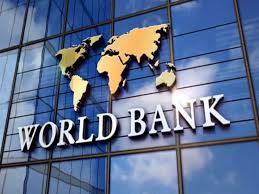Pakistan Urgently Needs Significant Investments in Climate Resilience to Secure its Economy and Reduce Poverty
ISLAMABAD —This year’s heatwave and devastating floods are a reminder that climate change-induced disasters can significantly set back Pakistan’s development ambitions and its ability to reduce poverty. These disasters have caused more than 1,700 deaths and displaced more than 8 million people. The damage to infrastructure, assets, crops, and livestock has also been massive, with more than $30 billion in damages and economic losses. The World Bank Group’s Country Climate and Development Report (CCDR) for Pakistan released today concludes that the country needs fundamental shifts in its development path and policies, requiring substantial investments in people-centric climate adaptation and resilience, that will require international support.
“The recent flooding and humanitarian crisis provide a wake-up call for urgent action to prevent further devastation to the people of Pakistan and its economy due to climate change,” said Martin Raiser, World Bank Vice President for South Asia. “Accelerated climate actions can protect the economy from shocks and secure more sustainable and inclusive growth in Pakistan.”
The CCDR notes that the combined risks of extreme climate-related events, environmental degradation, and air pollution are projected to reduce Pakistan’s GDP by at least 18 to 20% by 2050. This will stall progress on economic development and poverty reduction.
“If we want to tackle climate change, we need to prioritize investing in adaptation to help prepare Pakistan for future climate-related calamities, which are growing in frequency and intensity,” said Hela Cheikhrouhou, IFC Regional Vice President for Middle East, Central Asia, Türkiye, Afghanistan and Pakistan. “With the right policy frameworks, Pakistan has the opportunity to attract private investment to build its resilience, particularly in sectors such as water management, agriculture, urban infrastructure, municipal services, and housing.”
To improve adaptation to climate change and avoid high costs, the report recommends five priority transitions:
1. Transforming the Agri-Food System: Productivity in the agri-food system – the largest employer, particularly for poor and vulnerable households – has been plummeting due to the degradation of land, overuse of chemical inputs and water, and lack of research. And yields are projected to drop another 50% by 2050. To bolster rural incomes and strengthen food and water security, Pakistan needs to repurpose environmentally damaging subsidies, promote climate-smart and regenerative agriculture and livestock systems, and prioritize ecosystem restoration.
2. Building Resilient and Livable Cities: Pakistan’s population living in urban areas, already highly exposed to pollution and climate change, will increase from 37% in 2020 to 60% in 2050. To ensure cities become more liveable, urgent reforms are needed for more integrated land use planning and increased investments in municipal services and in energy efficiency and clean transportation. To this end, strong municipal governments, and the expansion of city finances via property taxation are critical.
3. Accelerating a Just Transition to Sustainable Energy and Low-carbon Transport: The energy sector is a critical enabler of economic development and poverty reduction. However, it is a huge drain on public finances and foreign exchange reserves and a major contributor to GHG emissions. Pakistan must prioritize reducing the cost of generation including through energy efficiency, ensuring cost-reflective tariffs and improved targeting of subsidies, while addressing technical and collection losses in transmission and distribution. Scaled-up investment in mass transit can avoid locking in highly polluting modes of transport.
4. Strengthening Human Capital to Achieve Sustained and Equitable Development and Climate Resilience: To address its human capital crisis, Pakistan needs to improve the management of water, sanitation, and hygiene, which is the main driver of child stunting, and reduce high fertility rates. Pakistan should also ensure universal access to quality education and expand its social-protection system by improving benefits, particularly for those at the highest risk.
5. Aligning Financing Policies, Incentives, and Institutions to Support Scale-up of Climate Actions: Implementing these policies and executing a climate-resilient and low-carbon development agenda will require total investment needs that amount to around 10% of the cumulative GDP up to 2030. Accelerating the ongoing reforms to expand domestic revenue mobilization, including raising new municipal and property taxes, as well as improving efficiency and targeting of subsidies for agriculture and energy while protecting the most vulnerable will help to finance a large part of the needed investments. Yet, this will not be enough. A comprehensive financing strategy, involving greater private sector involvement and significant international support will be essential to complement Pakistan’s own commitment towards resilient and inclusive development.
“Foreign private capital can play an important role in addressing the climate change challenges in Pakistan,” said Ethiopis Tafara, MIGA Vice President and Chief Risk, Legal and Administrative Officer. “Sustaining flows of foreign direct investment that support climate mitigation and adaptation will contribute toward financing Pakistan’s low-carbon transition.”
Pakistan is not a significant contributor to global warming, but it is on a high-growth trajectory of carbon emissions linked to fossil fuel use. This is also a source of the country’s chronic fiscal stress and worsening air pollution. Therefore, climate actions that bring co-benefits to both adaptation and mitigation and contribute to improving development outcomes should have the highest priority.


Comments are closed.